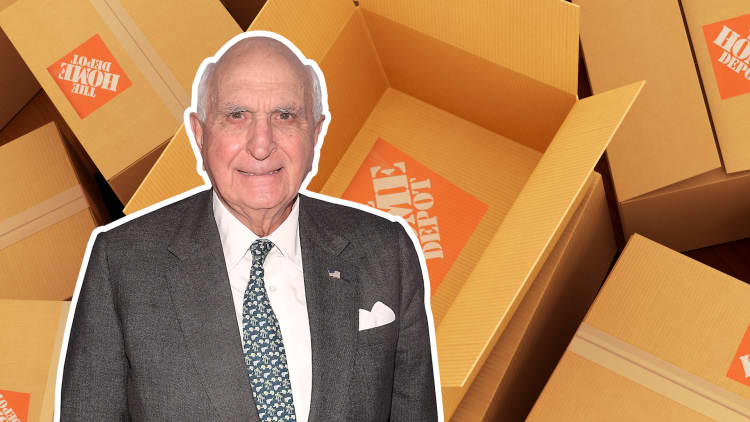In 1979, the co-founders of Home Depot planned to start the company with four locations in Atlanta. But when it came time to stock the shelves, they couldn't afford to buy enough merchandise.
"Well, we opened two up because we didn't have enough money," Ken Langone, the 82-year-old billionaire co-founder of Home Depot, tells CNBC Make It. "And in fact we didn't have enough money for those two."
In a pinch, the merchandising guru of the group, Pat Farrah, asked suppliers to give Home Depot empty boxes in lieu of actual merchandise, Langone, now worth $3.3 billion, tells CNBC Make It.
"Pat Farrah, one of the four founders — Bernie Marcus, Arthur Blank, Pat Farrah and me — Pat went out and persuaded the vendors, 'OK, you won't give us any more merchandise because you're afraid we will be able to pay you. Give us empty boxes with your labels on,'" Langone says. The suppliers obliged.
"The Home Depot didn't exactly get off to a flying start," Langone writes in his new book, "I Love Capitalism!" which includes details about the early days of the company.
"So we put all over the store — all these shelves 20-foot high — we had these boxes and everybody thought, 'Oh my God! Look at all this merchandise!' But there was air in the boxes. There was no products. They just gave us empty boxes. And we struggled," Langone says.
To get customers to come into the first Home Depot store, Marcus gave away cash.
"Early on, Bernie would stay outside with the fist of single dollar bills and give people a dollar if they'd go in and see what was in the store," Langone tells CNBC Make It.
Before too long, however, the founders knew they were onto something, "because we began to see the enthusiasm of the customers as they were coming in the stores," says Langone.
At the time, other competitive home center stores were 30,000 to 40,000 square feet, says Langone. Their first stores were 60,000 square feet. Today, Home Depot stores are more than 100,000 square feet.
"Bernie's idea was pretty simple: wide assortment, low prices and great service. And that's what we did," Langone tells CNBC Make It. "People could come in, if you wanted a $2 hammer or a $90 hammer, if you wanted a $15 faucet or a $60 faucet — and everything in between — we had it."
Home Depot had "sharp," competitive prices, and associates who are knowledgeable about the products, says Langone. "These people learned their business and, to this day, the heart and soul of the Home Depot are these 400,000 people that work in the stores," Langone says.
Despite having to launch with empty boxes on the shelves, it took less than a year for the business to gain traction.
"Over time, over that first year — we opened our first store in May of '79 — and that first year it was clear we were on our way, we were starting to do some big, big business in these stores," Langone tells CNBC Make It.
Home Depot went public in 1981. "And from then on it was nonstop," Langone tells CNBC Make It.
Indeed. Today there are more than 2,200 Home Depot stores around the world and the market capitalization of Home Depot is almost $220 billion.
See also:

Like this story? Like CNBC Make It on Facebook.



